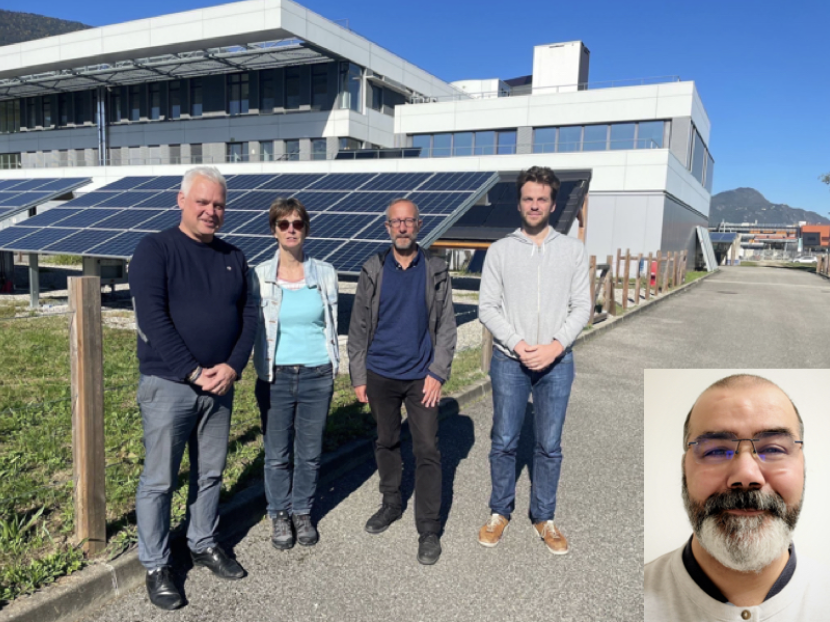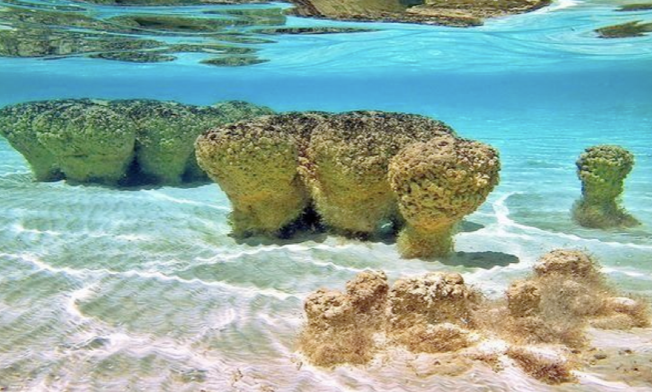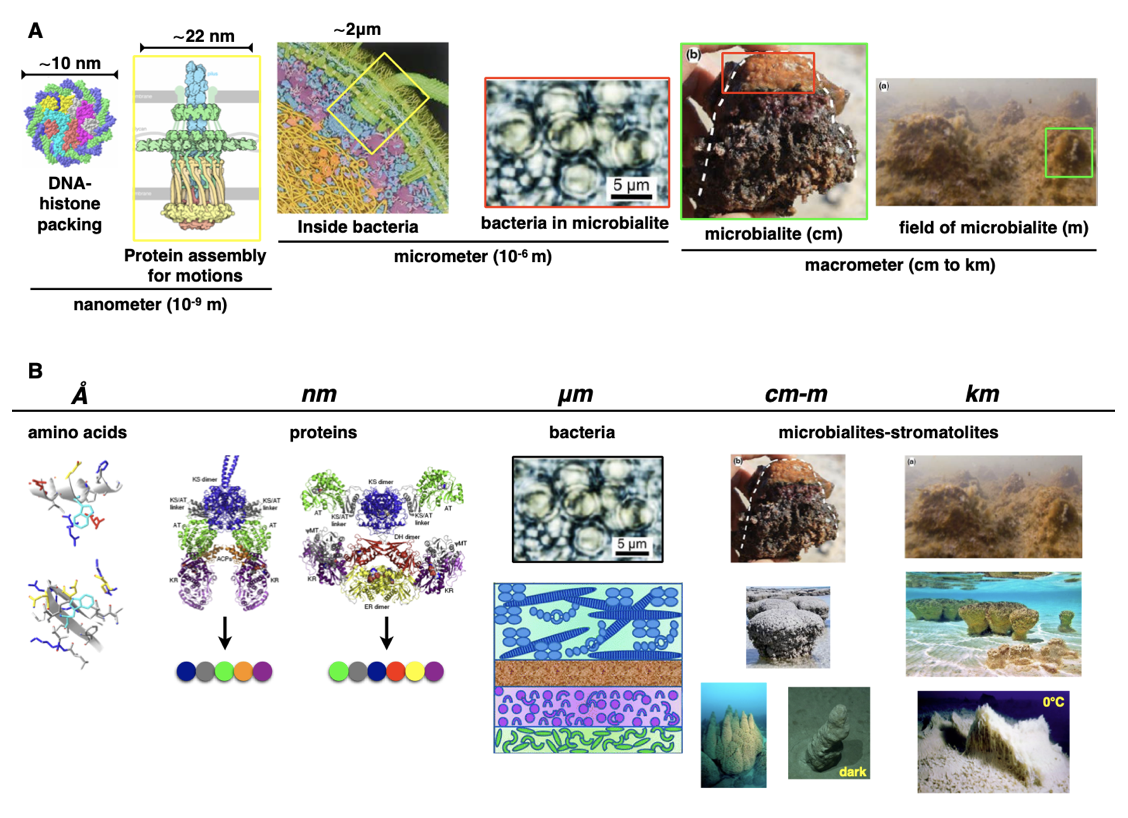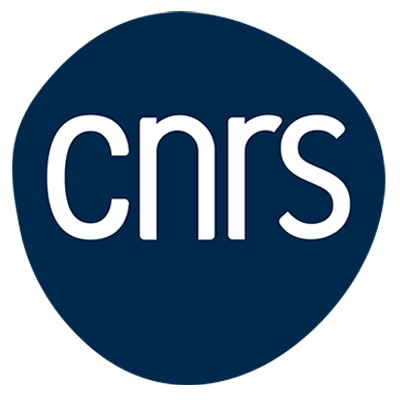IRP NATURBAN
Sustainable design: from nature to citiesIRP NATURBAN
2023-2027
Project Coordinator:
Claire Lesieur
claire.lesieur@ens-lyon.fr
Introduction
The CNRS-Université Savoie Mont Blanc IRP Naturban (Sustainable design: from nature to cities) is managed by Claire Lesieur (AMPERE UMR5005) in collaboration with Laurent Vuillon from the LAMA UMR5127, Christophe Ménézo and Martin Thebault from the LOCIE UMR5271 for the French teams (Fig. 1) and with Yao-ban Chan (School of Mathematics and Statistics) and Michael Parker (Bio21 institute) from the University of Melbourne, Annette George (School of Earth Sciences) from the University of Western Australia (UWA), Victoria Timchenko (School of Mechanical and Manufacturing Engineering) and Matt Santamouris (School of Built Environment) from the University of New South Wales (UNSW) for the Australian teams.

Figure 1. IRP Naturban French partners. Christophe Ménézo, Claire Lesieur, Laurent Vuillon, Martin Thébault (from left to right). Inset: Younes Zitouni.
Altogether the teams combine skills in Biology (experimental and computational), Geology, Mathematics, and Physics of buildings, cities and solar energy. This is an unconventional and challenging association of scientists aiming at improving knowledge on their own domains while addressing collectively the issue of the urban climate through solutions inspired from nature.
Claire Lesieur and Laurent Vuillon are developing network-based models to study natural system performances since 20081–5. They started collaborating with Christophe Ménézo in 2020 to expand the natural system models to urban systems, looking for nature-based solutions to design cities more sustainable in terms of space and energy. They decided to call on their respective Australian collaborators to gather complementary skills, still keeping a high diversity of disciplines. Joining forces with Australian colleagues broadens the access to urban and natural data bearing different history, climates and ages compared to European counterpart and offers the unique opportunity to study stromatolites (Fig. 2), the eldest natural organism on the planet (>3 billion years) as a source of inspiration for multiple scale sustainable designs. Stromatolites and microbialites are composed of bacteria (living matter), which produce inorganic matter through their metabolism and according to their environmental conditions.

Figure 2. Stromatolites, Shark Bay, Western Australia. Image credit: https://www.sharkbay.org/publications/fact-sheets-guides/stromatolites/
Context and Main objectives of research
According to the United Nation Population Fund, 68% of the world population will live in urban areas by 2050 against 57% at present. Such urban growth is a challenge for land-use planning because it requires to find where there is space to accommodate more people in urban areas, and preferably within cities to limit spreading on further territories (no sprawl) and preserve space for biodiversity and agriculture. In short, the difficulty is the densification of an already rather saturated urban space.
Urban areas are responsible for 67% of energy consumption (https://www.iea.org/), 71% of CO2 emissions (https://www.ipcc.ch/), the rise in temperature (urban climate, heat urban Island), climate changes; and are the site of social differences. Now, the urban forms, which cover how buildings are organized in the urban space, are directly or indirectly responsible, via the urban space occupancy, of the energy consumption, the natural energy capture, the pollution, the mobility and the urban people well-being and health6–13. Hence, however difficult, the challenge for the urban growth also lies in finding how to build in the future to manage the urban climate, both literally and metaphorically.
The concern is finding a sustainable management of the urban space and of its consequences on the urban health state (mobility, pollution, heat, energy, well being, etc.).
Natural systems, as cities, are dense and overcrowded (Fig. 3A). Yet they are dynamic, places of many fast transports and flows and are capable of complex collective functions14. Traffic in cells is comparable to traffic in cities, as cells regulate main routes, side routes and intersections by a traffic control system which guides the spatiotemporal distribution of substances within the cell15. What is also remarkable and of particular interest for the urban planning problem, is the sustainability of the natural systems to time and perturbations, illustrated by their existence for more than 3 billion years16–18.

Figure 3. A. Examples of dense natural systems at different length-scales19–22. B. Examples of diversity in element composition and spatial organization of natural systems at different length-scales23,24. aStromatolites at Shark Bay, Western Australia, image credit: UNSW Sydney/Brendan Burns. bPhoto by the Pavillon Lake Research Project. cThe investigated dome-shaped limestone deposit at 734 meters water depth; photo taken by the diving robot “MARUM-QUEST” (c) MARUM – Zentrum für Marine Umweltwissenschaften, Universität Bremen. dMicrobial Mat Community, Lake Vanda, Antarctica, image credit: Dale Andersen.
All scales in natural systems are designed to last: from the genes and the proteins (nanoscale) to the microscale (bacteria, eukaryotes) and up to the macroscale of ecosystems (Fig. 3A)25. The natural sustainability is based on diversity: diversity in the features of the system elements (chemistry, geometry), in the physical interactions between the elements of the system and as a result, in the spatial organization of the elements, the dynamics and the functions of the systems (Fig. 3B)26. A diversity of solutions means the system works over and despite differences and hence is not as susceptible to perturbations as a system designed to work on few optimal solutions.
Still, the natural system solutions are optimized, not to function optimally but to distribute, share and spare resources between all the elements of the system according to the needs and features of the elements and using compensatory mechanisms. If two elements of a system use a lot of resources, the surrounding elements would use a lot less, keeping overall resources available for future needs. The diversity underlies the robustness to perturbations but also promotes innovation through perturbations, endowing natural systems with the capacity to adapt to changes in the environment and improve sustainability.
Adequately, the natural systems and the urban systems share features that makes it possible to study them with a common modelling approach and to compare properties, regardless the system and the scales (Fig. 4A). Basically, both systems are composed of individual elements (e.g. buildings, roofs, atoms, genes, amino acids, cells, etc.) linked by relations (e.g. distances, flow, mobility) that yield the system global features (shapes, structures, thermic, dynamics, functions, etc.).
Thus, networks and in particular spatial networks, are suitable to model both systems with the individual elements represented by nodes and proximity between elements represented by links (Fig. 4B and fig. 4C)27–29. The system properties and performances can be investigated using classical and ad-hoc network measures, compared across systems and across environmental conditions.

Figure 430. A. Common spatial multi-scale features between the natural system protein structure (top) and the urban system buildings (bottom). B. Spatial network model of the protein structure represented by an amino acid network with amino acid as nodes and distance between them as links. C. Spatial network model of the city of Lyon represented by a building network with buildings as nodes and distance between them as links.
Moreover, both system global features and performances depend on the system environment. For example the stromatolites and microbialites macroscopic shapes (Fig. 3B) depend as much on the genetic and bacterial population diversities as on the environmental conditions where the bacteria grow. Likewise, the features of cities such as urban forms, solar potential, urban temperature, pollution, mobility, etc. depend on the building features (material, shapes, layouts, etc.) as well as on the climate of the geographical location of the cities. But the natural systems have designs adapted to their environmental conditions while urban systems still need to do so to find customized sustainable solutions.
Hence the motivation of the IRP to study the sustainable design of natural systems to find inspiration and solutions to build cities more sustainable, following four main research objectives:
- Datamining: collecting urban and natural systems data for building databases. Main work for the biologist, geologist and physicists of urban systems.
- Data modelling and data analysis: a network approach will be used to model the elements of the systems by nodes (vertices) and the relations between elements by links (edges). Statistics and combinatorics will be used to analyse and simulate data. Main work for the mathematicians.
- System diagnostic and performances: first, each system is analysed separately, second both system features are compared and third urban system inspired from natural features are generated. Everyone is involved.
- From nature to cities: simulation, test and validation of the gain of properties of urban designs inspired from natural system properties. Everyone is involved.
Network activities
The IRP is divided in 5 work packages whose links are shown in Fig. 5.

Figure 5. IRP work packages represented by a multi-layer network with a discipline/issue per layer, nodes per work packages, intra and inter layer links per collective work tasks. Thick arrows indicate all work packages are involved.
WP1 is dedicated to the management, which is organization of workshops and conferences between members of the project, student exchanges and co-supervision, grant application. WP1 is also the dissemination, valorisation and communication of the IRP results to the scientific community.
WP2 is dedicated to the study of the natural systems with an emphasis on bacteria as main model because of the high data availability and the diversity of living conditions. Particular focus is on bacteria from microbialites and stromatolites because as the eldest living organisms on the planet, they have undergone the most climate changes and are thus a natural inspiration for the sustainability to environmental condition changes required for the urban systems22. The natural system is modelled and studied at all scales from the proteins to the field of stromatolites (Fig. 3). The second focus is on pore-forming toxins from bacteria to investigate the relation between space management and dynamics31,32.
WP3 regroups the theory and methods used and developed to study the two systems, the construction and management of natural and urban databases and the 3D printing. For example, a growth model for Stromatolites (using tiling and packing theory) will be built to test some 3D geometrical constraints of Natural Systems and an analogue model will be stated for Urban Systems. In addition, methods from network theory and from stochastic processes will be studied to explain the different behaviors. Statistics and combinatory will be used to test and validate the natural system properties inferred from the network analysis33.
WP4 is the study of the urban system covering analysis of different scales from buildings to entire cities, analysis of the urban energy management, the urban thermic and flux and diagnostic of the urban states. Comparison between cities in Australia and in France will allow investigating a variety of urban situation, seeking for solutions customized to different climates. The natural systems analysed from organisms in Australia and Europe will be used as respective inspiration for sustainable designs appropriate to each climate.
WP5 is to gather results of the analysis of both systems, compare them and transfer natural solutions deemed appropriate to urban design, test and validate the gain in terms of space, energy and flow.
To illustrate the rational of the IRP biomimetic approach, we summarize below its origin and how it was initiated by Claire Lesieur (AMPERE & IXXI-ENS-Lyon, CNRS), Laurent Vuillon (LAMA, USMB), Remy Cazabet (LIRIS, UCBL) and Lorenza Pacini (AMPERE & IXXI-ENS-Lyon) thanks to a financial support from the MITI CNRS call “OASIC challenge” in 2017 for a project called Go-Pro (Gestion Optimisée: Proteines urbaines, Optimized management: urban proteins)34.
Proteins, with nanometer sizes (10-9m), are the smallest functional objects of living organisms. They have existed for more than 3 billions years and are therefore clearly designed to last. A protein is evolvable and changes in terms of chemical compositions (amino acid composition, building blocks of proteins), shapes, motions, and biological functions to last over time and under internal (genetic mutations) and external (environmental conditions) perturbations. One of the key of the protein sustainability is related to a space occupancy by the amino acids in the protein structure that follows the Goldilocks principle: not too high amino acid packing, not too little but just enough to maintain some free space around the amino acids to tolerate mutations, for example of a small to a big amino acid and accommodate atomic motions required for the biological function35. This result was obtained by modeling protein structures by the spatial networks mentioned above, where amino acids are the nodes of the network linked according to distances between their atoms and by analyzing network measures (Fig. 4B).
This space management sparing empty space locally around amino acids by selecting the right amino acid neighbors to tolerate mutation and enable motions sounded potentially interesting for designing sustainable dense and dynamical systems. To test such possibility, we chose to extend the amino acid spatial network model to investigate cities since they are facing numerous challenges related to space management. During her PhD thesis, Lorenza Pacini developed a building network model where the nodes are the buildings or building blocks linked according to distances between them (Fig. 4C)30. The network measures used to analyze amino acid layouts in protein structures were used to analyze how buildings occupy the urban space in cities (https://lnkd.in/e7C_jzzf).
Figure 6 shows the comparison between the mean space occupied by neighbors around amino acids in protein structures and around buildings in the city of Lyon, France. The conclusion is obvious: the protein is green, space is moderately occupied around amino acids, leaving free space preserved locally around amino acids, while the city of Lyon is not green. Free space left available locally is deemed sustainable to mutations (e.g. a change of building) and motions. This method opens possibilities to diagnose the state of the urban space, study, correct and adapt cities through the city geometry and inspiration from nature, goal of the IRP naturban.

Figure 6. Mean space occupancy in protein and urban systems. Spatial networks with respectively, amino acids and buildings as nodes model both systems, linked according to spatial proximity. Each amino acid and each building is colored according to the mean space occupied by its first neighbours. In red are spaces over-occupied, in blue spaces under occupied and in green spaces moderately occupied, deemed sustainable, i.e. capable of accommodating more or bigger buildings/amino acids.
References
1. Vuillon, L. & Lesieur, C. From local to global changes in proteins: a network view. Current opinion in structural biology 31, 1–8 (2015).
2. Feverati, G. & Lesieur, C. Oligomeric interfaces under the lens: gemini. PloS one 5, e9897 (2010).
3. Pacini, L., Dorantes-Gilardi, R., Vuillon, L. & Lesieur, C. Mapping Function from Dynamics: Future Challenges for Network-Based Models of Protein Structures. Frontiers in Molecular Biosciences 8, (2021).
4. Pacini, L. & Lesieur, C. A computational methodology to diagnose sequence-variant dynamic perturbations by comparing atomic protein structures. Bioinformatics (2021).
5. Pacini, L. & Lesieur, C. GCAT: A network model of mutational influences between amino acid positions in PSD95pdz3. Frontiers in Molecular Biosciences 9, (2022).
6. Santamouris, M. et al. Urban heat island and overheating characteristics in Sydney, Australia. An analysis of multiyear measurements. Sustainability 9, 712 (2017).
7. Santamouris, M. & Osmond, P. Increasing Green Infrastructure in Cities: Impact on Ambient Temperature, Air Quality and Heat-Related Mortality and Morbidity. Buildings 10, 233 (2020).
8. Boccalatte, A., Fossa, M., Gaillard, L. & Menezo, C. Microclimate and urban morphology effects on building energy demand in different European cities. Energy and Buildings 224, 110129 (2020).
9. Chen, H.-C., Han, Q. & de Vries, B. Urban morphology indicator analyzes for urban energy modeling. Sustainable Cities and Society 52, 101863 (2020).
10. Biljecki, F. & Chow, Y. S. Global building morphology indicators. Computers, Environment and Urban Systems 95, 101809 (2022).
11. Morganti, M., Salvati, A., Coch, H. & Cecere, C. Urban morphology indicators for solar energy analysis. Energy Procedia 134, 807–814 (2017).
12. Pili, S., Grigoriadis, E., Carlucci, M., Clemente, M. & Salvati, L. Towards sustainable growth? A multi-criteria assessment of (changing) urban forms. Ecological Indicators 76, 71–80 (2017).
13. Thebault, M., Giroux-Julien, S., Timchenko, V., Reizes, J. & Ménézo, C. Numerical study of the coherent structures in a transitional vertical channel natural convection flow. Physics of Fluids 33, 034106 (2021).
14. Zinner, M., Lukonin, I. & Liberali, P. Design principles of tissue organisation: How single cells coordinate across scales. Current opinion in cell biology 67, 37–45 (2020).
15. Liberali, P., Snijder, B. & Pelkmans, L. A hierarchical map of regulatory genetic interactions in membrane trafficking. Cell 157, 1473–1487 (2014).
16. Rackham, O. J. et al. The evolution and structure prediction of coiled coils across all genomes. Journal of molecular biology 403, 480–93 (2010).
17. Kéfi, S., Miele, V., Wieters, E. A., Navarrete, S. A. & Berlow, E. L. How structured is the entangled bank? The surprisingly simple organization of multiplex ecological networks leads to increased persistence and resilience. PLoS biology 14, e1002527 (2016).
18. Fortin, M.-J., Dale, M. R. & Brimacombe, C. Network ecology in dynamic landscapes. Proceedings of the Royal Society B 288, 20201889 (2021).
19. Valencia-Sánchez, M. I. et al. The structure of a virus-encoded nucleosome. Nature structural & molecular biology 28, 413–417 (2021).
20. David S. Goodsell. Molecule of the Month: Pilus Machine, RCSB Protein Data Bank. (2017).
21. David S. Goodsell. Escherichia coli Bacterium, RCSB Protein Data Bank. (2021).
22. Bischoff, K. et al. Spherulitic microbialites from modern hypersaline lakes, Rottnest Island, Western Australia. Geobiology 18, 725–741 (2020).
23. Stal, L. J. Cyanobacterial mats and stromatolites. Ecology of cyanobacteria II: their diversity in space and time 65–125 (2012).
24. Smith, J. L., Skiniotis, G. & Sherman, D. H. Architecture of the polyketide synthase module: surprises from electron cryo-microscopy. Current opinion in structural biology 31, 9–19 (2015).
25. Kitano, H. Biological robustness. Nature Reviews Genetics 5, 826–837 (2004).
26. Payne, J. L. & Wagner, A. The robustness and evolvability of transcription factor binding sites. Science 343, 875–7 (2014).
27. Boeing, G. A multi-scale analysis of 27,000 urban street networks: Every US city, town, urbanized area, and Zillow neighborhood. Environment and Planning B: Urban Analytics and City Science 47, 590–608 (2020).
28. M Barthelemy. Spatial networks. Physics Reports 399, 1–101.
29. Lesieur, C. & Vuillon, L. Topology Results on Adjacent Amino Acid Networks of Oligomeric Proteins. in Allostery 113–135 (Springer).
30. Lorenza Pacini. Investigation of Protein Structure Sustainability and Bio-Inspiration for Urban Systems. (PhD Thesis, University Claude Bernard Lyon, 2021).
31. Feil, S. C., Ascher, D. B., Kuiper, M. J., Tweten, R. K. & Parker, M. W. Structural studies of Streptococcus pyogenes streptolysin O provide insights into the early steps of membrane penetration. Journal of molecular biology 426, 785–792 (2014).
32. Burns, J. R., Morton, C. J., Parker, M. W. & Tweten, R. K. An Intermolecular π-Stacking Interaction Drives Conformational Changes Necessary to β-Barrel Formation in a Pore-Forming Toxin. mBio 10, e01017-19 (2019).
33. Feng, Q. et al. An accurate method for identifying recent recombinants from unaligned sequences Supplementary materials.
34. Lorenza Pacini, Remy Cazabet, Laurent Vuillon, Claire Lesieur. Optimized Space Design: Natural Versus Urban Systems. (Tesi di laurea Magistrale, ING – Scuola di Ingegneria Industriale e dell’Informazione, Politecnico Milano, 2018).
35. Dorantes-Gilardi, R., Bourgeat, L., Pacini, L., Vuillon, L. & Lesieur, C. In proteins, the structural responses of a position to mutation rely on the Goldilocks principle: not too many links, not too few. Physical Chemistry Chemical Physics 20, 25399–25410 (2018).
Expected results
- Elaborate specification in urban need to be addressed with natural systems
- Build natural and urban databases at different relevant spatial scales (Gene, proteins, bacteria, stromatolites, building, buidling layout, city areas, cities)
- Datamining, data modelling and data analysis using the databases of natural and urban systems
- Compared sustainable properties in living and urban systems, transfer solutions to be tested and validated using numerical simulation and 3D printing.
Institutions and laboratories involved
French (FR) and Australian skills (AUS):
- Biology and Geology: FR: Claire Lesieur, AUS: Michael Parker (Proteins), Annette George (stromatolites),
- Physics of buildings and cities, fluid dynamics: FR: Christophe Ménézo, Martin Thébault, AUS: Matt Santamouris, Victoria Timchenko,
- Mathematics: FR: Laurent Vuillon, AUS: Yao-ban Chan.
In France
|
Name |
Laboratory |
Institutional affiliation (employer) |
|
Coordinator Claire Lesieur |
AMPERE UMR5005 |
CNRS INSIS |
|
Younes Zitouni |
AMPERE UMR5005 |
UCBL |
|
Laurent Vuillon |
LAMA UMR5127 |
Université Savoie Mont Blanc |
|
Christophe Ménézo |
LOCIE UMR5271 |
Université Savoie Mont Blanc |
|
Martin Thébault |
LOCIE UMR5271 |
CNRS-INSIS |
In Australia
|
Name |
Laboratory |
Institutional affiliation (employer) |
|
Coordinator Mat Santamouris |
School of Built Environment |
University of New South Wales (UNSW) |
|
Victoria Timchenko |
School of Mechanical and Manufacturing Engineering |
University of New South Wales (UNSW) |
|
Yao-ban Chan |
School of Mathematics and Statistics |
University of Melbourne |
|
Michael Parker |
Bio21 Institute |
University of Melbourne |
|
Annette George |
School of Earth Sciences |
University of Western Australia |
